Skewered lamb smoked in tandoor clay ovens, spicy chicken wraps and frothy chai flavoured with ginger and cardamom: it's no secret that Delhiites love to eat. The Indian capital’s distinct street food culture takes inspiration from a host of different ethnic and religious communities who call the city their home. Eating in Delhi is also a historical affair, with dishes made to adapted recipes passed down through generations and served in decades-old street food stands.
Delhi’s food culture is rooted around Chandni Chowk – the city’s oldest and busiest marketplace that hustles and bustles with activity – but it also extends to metro stations, bylanes, gardens and even the flyovers of the larger megalopolis.
Because of the ever-booming street food scene, Delhi, like the rest of India, may seem a little overwhelming at first glance. So, ease yourself into the city’s diverse dining milieu with this guide.
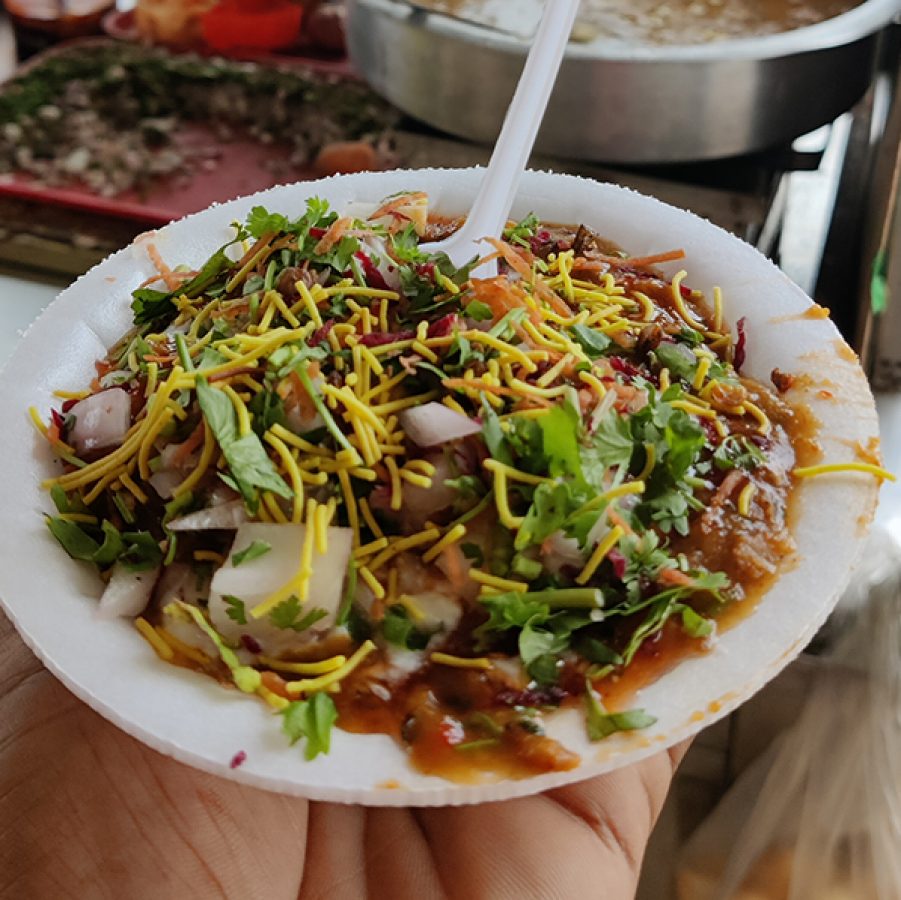
Credit: Sharowar Hussain/Getty Images
Chaat
It is, quite truly, difficult to define chaat. It’s a delightfully sweet and tangy, savoury yet spicy, crispy and crunchy family of snacks whose multitude of textures and flavours embody India’s vast culinary landscape. You can find them generously loaded with yoghurt and chutney almost everywhere in Delhi by metro stations, in front of a grocery store or on busy pavements.
Chaat is usually piled high with crispy carbs like puffed rice or crackers alongside potatoes, diced onions and tomatoes, and comes topped with sauces made of tamarind, cilantro, mint, and yoghurt. For added crunch, chaatwallahs (chaat vendors) sometimes add deep-fried spicy potato or chickpea bits. All this is then sprinkled with chaat masala, an Indian spice blend with umami notes.
Delhi street vendors get creative with this ubiquitous snack, but we recommend trying it at Haldiram’s , a multinational Indian sweets business with a history dating back to the early 20th century, now serving in a sit-down set up. Go for the dahi bhalla: lentil fritters dunked in yoghurt and raj kachori – crispy fried shells filled with lentils, potatoes and more yoghurt.

Credit: Artit Wongpradu/Getty Images
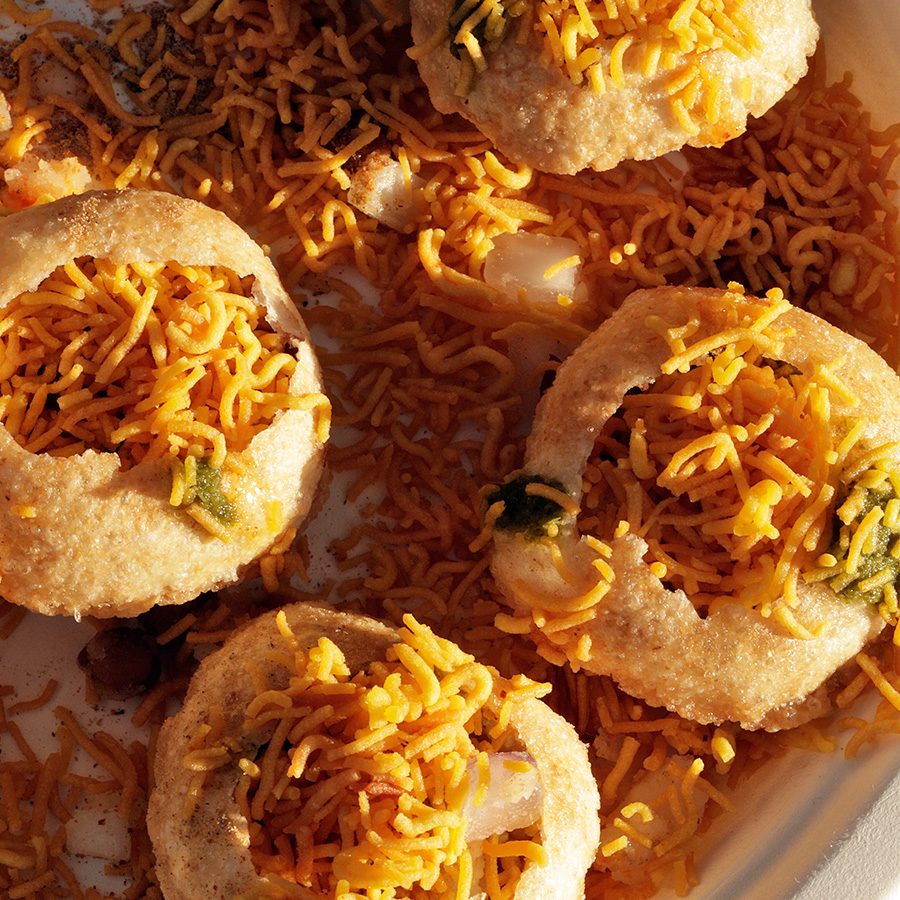
Credit: San Francisco Chronicle/Getty Images
Golgappa
Golgappa – called pani puri, puchka and phulki in different regions – is India’s love language. You’ll often see conversations and gossip circles form over these deep-fried hollowed-out balls made from semolina, wheat or refined white flour. In Delhi, they come stuffed with chopped potato and peas, and are served overflowing with spicy or sweet-sour water flavoured with cilantro, mint, cumin, asafoetida, lime, tamarind – or a mix of everything.
Vaishnav Chat Bhandar, one of the oldest snack shops in Delhi’s north, sells some of the city’s best Delhi-style golgappa. Remember to pop the whole thing in your mouth, and to start calling them “golgappayy!” – just like the locals do.
Vaishnav Chat Bhandar, 93-E, Kolhapur Road, Kamla Nagar

Credit: Eye Ubiquitous/Getty Images
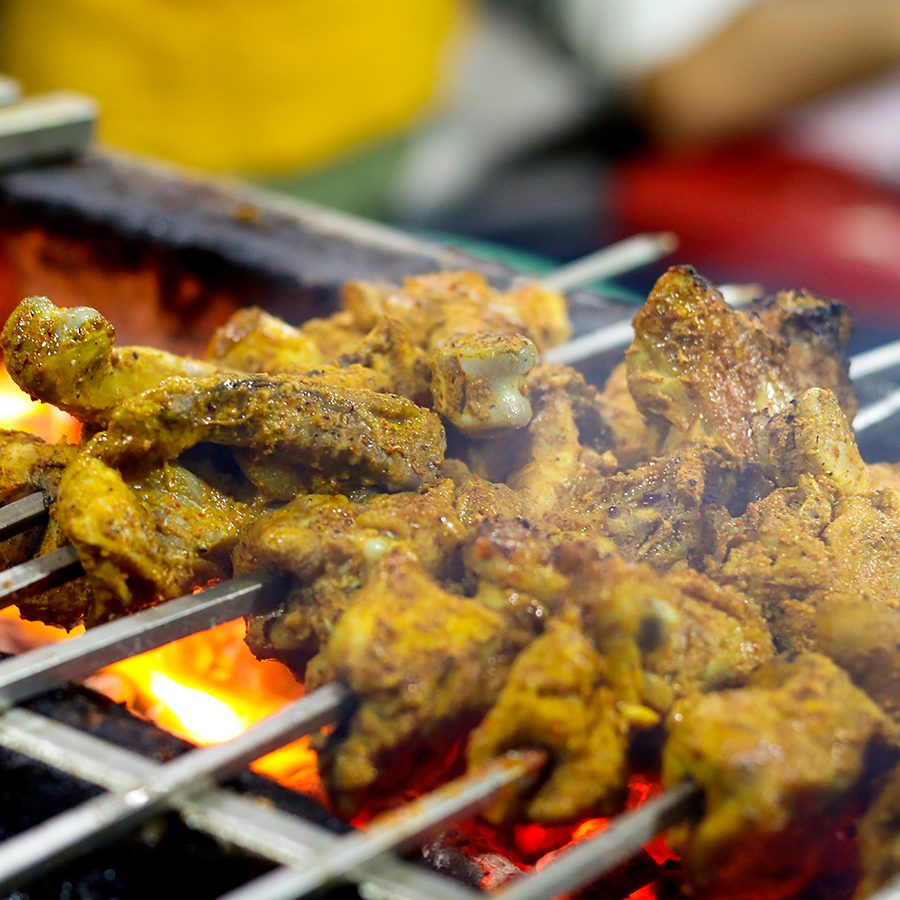
Credit: picture Umar/Getty Images
Kebab
Kebabas (grilled, smoked or seared meat) have stepped up from the busy, frenzied streets of India to glitzy fine-dining venues across the world, but the bylanes of Old Delhi – the city’s historic heart – remain one of the best places for it.
Manoeuvre past the commercial buzz of Old Delhi’s Jama Masjid, one of India’s largest mosques made of red sandstone and marble, to Qureshi , a live kitchen preparing different variations of the kebab coated in butter. Spiced ground meat is wrapped around skewers and grilled over a charcoal fire to prepare deliciously juicy seekh kebabs, while minced meat is mixed with spices and pan-fried for galouti kebab.
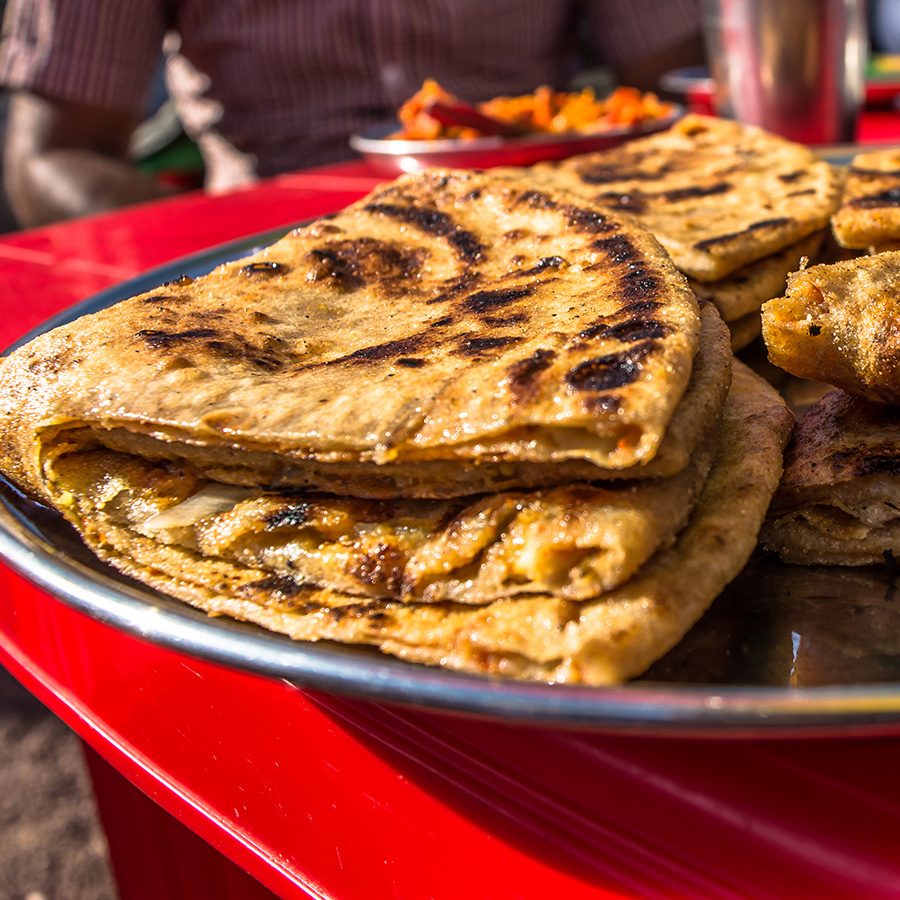
Credit: Hitesh Singh/Getty Images
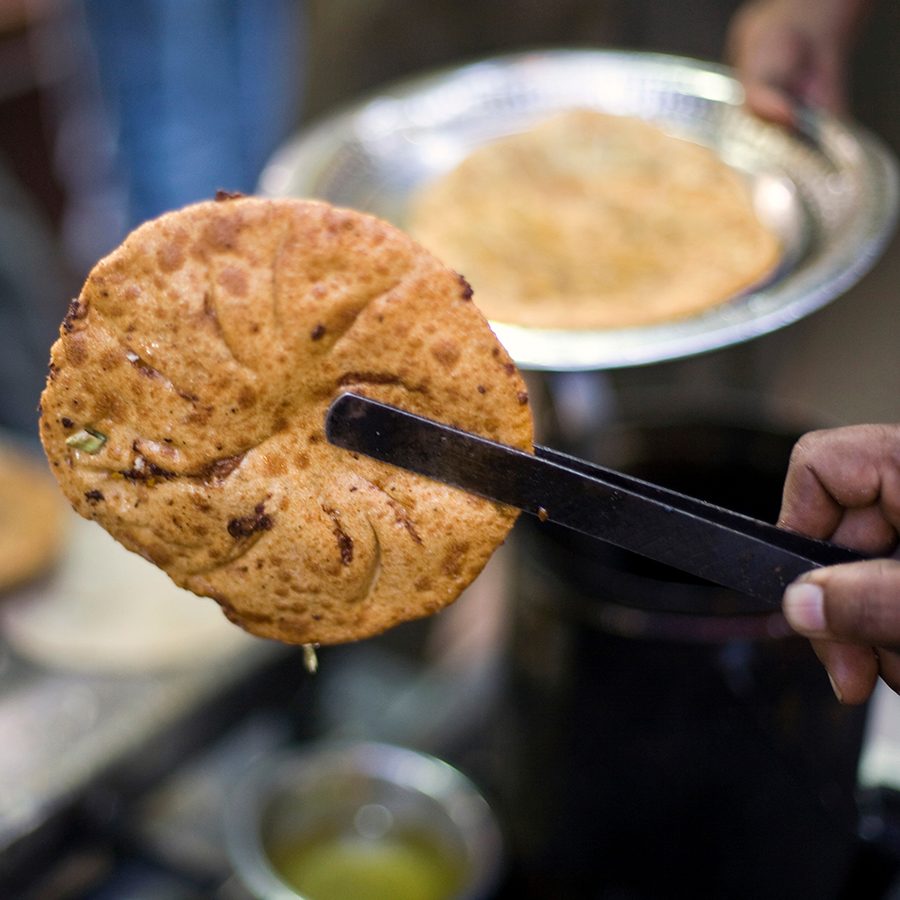
Credit: Stuart Freedman/Getty Images
Paratha
Breakfast in India’s capital begins with a crispy, golden paratha topped with a dollop of butter, pickle or curd. These whole-wheat flour flatbreads are stuffed with potatoes, lentils, paneer (cottage cheese), peas and vegetables, then browned on a metal griddle with ghee.
You can enjoy them everywhere in Delhi, but in-the-know Delhiites will tell you that nowhere is as legendary as Paranthe Wali Gali, a narrow bylane tucked away in the maze-like Chandni Chowk. Here, dozens of paratha shops jostle for space, with a history dating back to the 1870s. Head to the street in the morning for aloo (potato) paratha served with tangy pickles and mint-based condiments.
Paranthe Wali Gali, Chandni Chowk
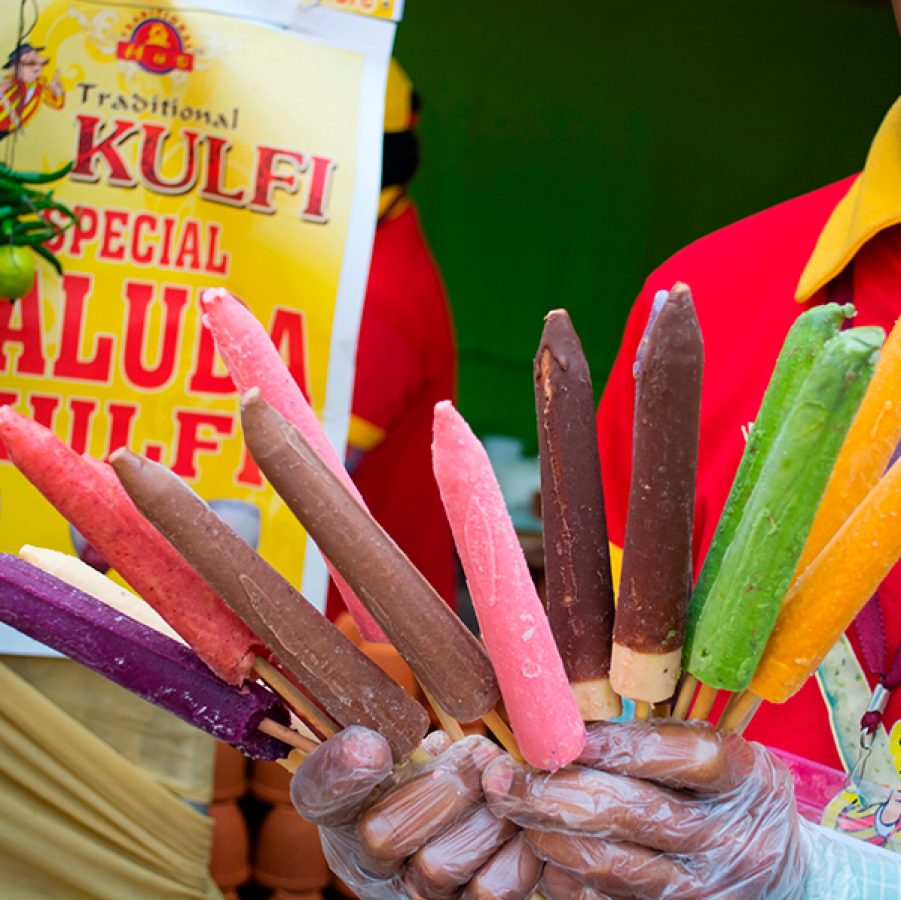
Credit: IndiaPictures/Getty Images
Kulfi
A popular summer treat across India, kulfi may resemble ice cream, but the traditional frozen variety you’ll find on the streets of Delhi tends to be smoother and creamier, as the milk and sugar are slow-cooked over many hours to prepare it. Kulfi comes in many flavours, including pistachio, rose, cardamom and saffron, and is served on a stick or in tiny clay pots.
At Kuremal's Kulfi Mohanlal Kulfi Wale – a streetside joint that’s been around since 1906 – most of their kulfi blends contain seasonal fruit pulps and are stuffed and frozen in hollowed-out fruits. There are over 70 different varieties, including pomegranate, coconut and mango. Be sure to try the kulfi falooda: chopped velvety kulfi topped with soft, rose syrup-flavoured vermicelli and sprinkled with crunchy pistachios and saffron.
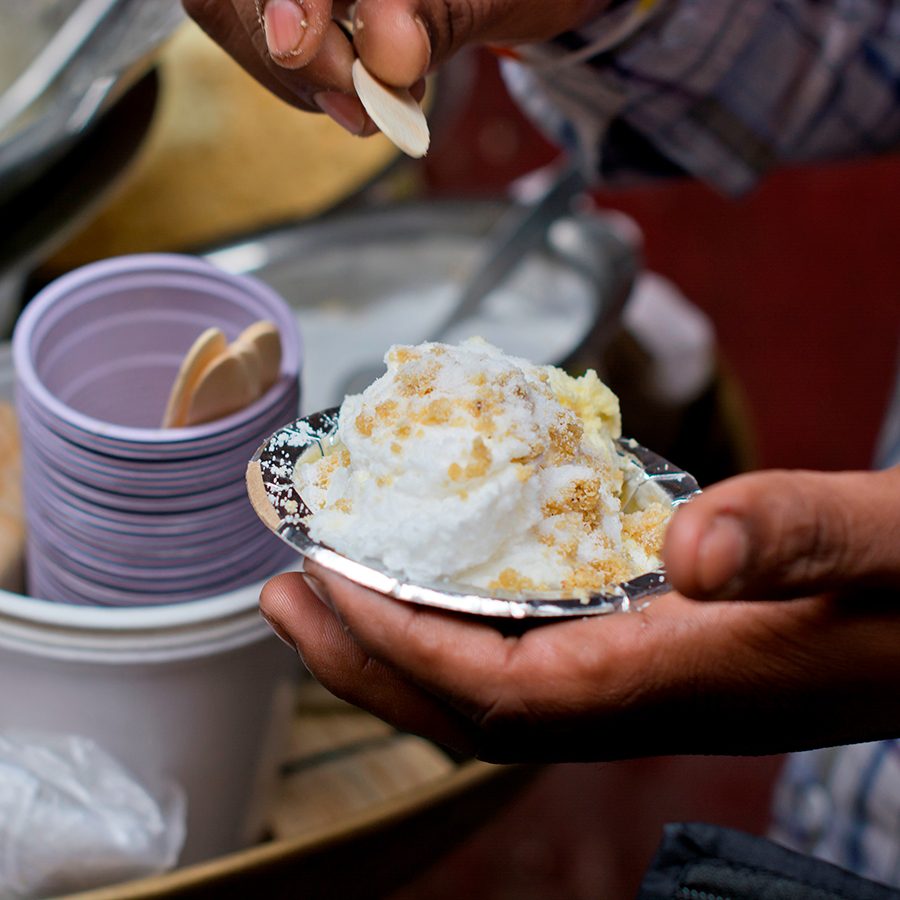
Credit: IndiaPictures/Getty Images
Daulat ki chaat
Don’t be deceived by the name – daulat ki chaat is a world apart from Delhi’s usual chaat. It’s a light, fluffy, and delicate blend of frothy milk and sugar garnished with saffron and nuts. Historically, when temperatures dropped in winter, North Indians used winter dew on moonlit nights to chill and aerate fresh milk while they laboriously hand-churned it for hours to create a cloudy foam. This dessert could once be found in Mughal royal courts, and now you’ll find it on the city’s streets.
Some of Delhi’s best daulat ki chaat is made by migrants from Uttar Pradesh, who serve it in earthen pots in Old Delhi alleyways such as Dariba Kalan and Kinari Bazaar. You’ll find several carts in those areas but Khemchand , which lies behind Paranthe Wali Gali, is known for their creamy and delightful take on this sweet snack.
More inspiration
Delhi travel information
- China – the Chinese Mainland, Hong Kong SAR, Macao SAR and Taiwan Region
- Hong Kong SAR - English
- Chinese Mainland (China) - English
- Taiwan, China - English
- 香港特別行政區 - 繁體中文
- 中国內地 - 简体中文
- 中國台灣 - 繁體中文
- Africa
- South Africa - English
- Asia
- Bangladesh - English
- Korea - English
- Singapore - English
- Cambodia - English
- 한국 - 한국어
- Sri Lanka - English
- India - English
- Malaysia - English
- Thailand - English
- Indonesia - English
- Maldives - English
- ประเทศไทย - ภาษาไทย
- Indonesia - Bahasa Indonesia
- Myanmar - English
- Vietnam - English
- Japan - English
- Nepal - English
- Việt Nam - tiếng Việt
- 日本 - 日本語
- Philippines - English
- Australasia
- Australia - English
- New Zealand - English





.renditionimage.450.450.jpg)


